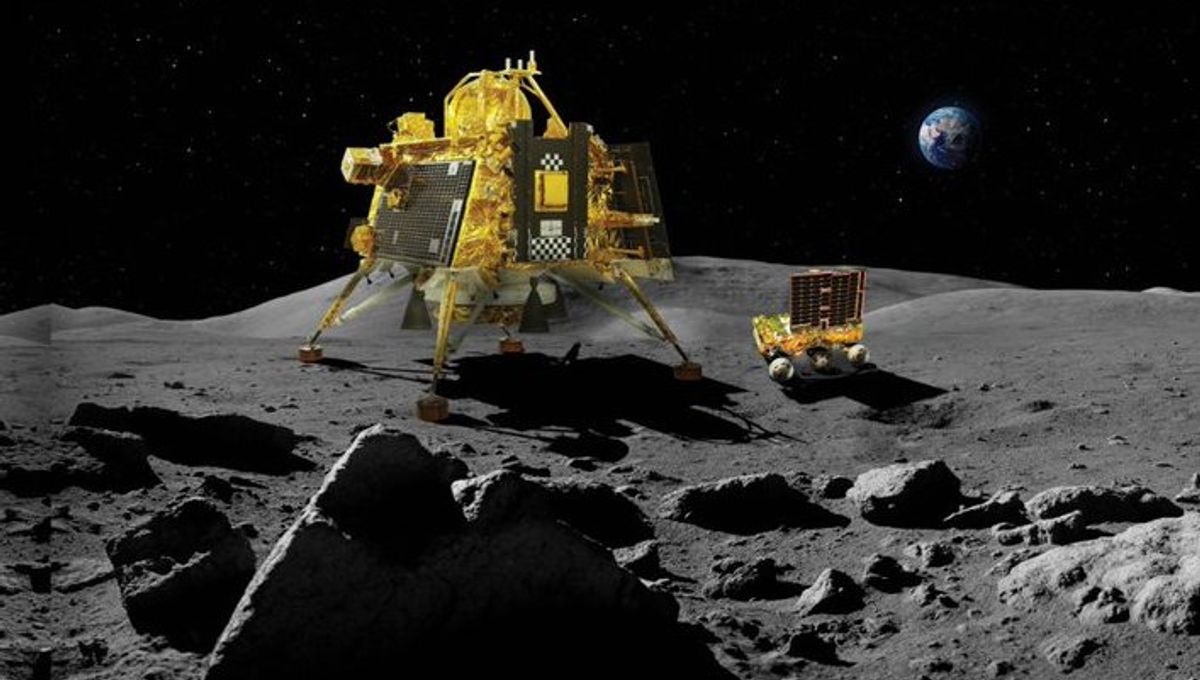
Yesterday, India made history, becoming the fourth nation to land on the Moon and the first to land at the lunar South Pole. Now, we’ve got the first photos of the landing site and the plucky rover Pragyan, the Moon’s newest resident, has started exploring its new home.
“The Ch-3 Rover ramped down from the Lander and India took a walk on the Moon!” the Indian Space Research Organisation (ISRO) shared on X (formerly Twitter). Now, its 14 days (one lunar day) of science observations have begun.
Pragyan, which means “wisdom” in Sanskrit, rolled out of the Vikram lander a few hours after the successful touchdown of Chandrayaan-3 near the lunar South Pole. To the surprise of some, it didn’t land in an ancient crater like Curiosity and Perseverance on Mars – but there is a good reason for that.
The Moon’s South Pole is the hottest destination right now, with multiple missions attempting to get there, including Lunar-25 (RIP) and Artemis 3, which plans to land humans there. The reason is that there is plenty of ice trapped there, something that will be vital for future crewed missions and any hope of future settlements.
A lot of that ice is indeed held in the Moon’s ancient craters, frozen because the Sun never reaches these parts of the lunar surface. However, solar power is vital for Moon rovers to power their journeys and to survive the freezing lunar night temperatures. In fact, Vikram has double the solar panels of its doomed predecessor.
The Moon’s southern terrain is also difficult to maneuver in, and Pragyan may not make its way out of a crater. Plus, looking for water ice is not listed among Chandrayaan-3’s mission objectives. However, it’s in the perfect place to study the thermal properties of the lunar surface near the southern polar region, its seismicity, composition, and near-surface plasma density. Pragyan is equipped with a variety of instruments including a spectrometer, magnetometer, and camera.
If you want to be super nerdy, you can even look up Vikram’s landing site and where the six-wheeled rover is exploring. ISRO has shared its coordinates as 69.367621 °S, 32.348126 °E – around 100 kilometers (62 miles) from where the doomed Chandrayaan-2 crash-landed in 2019.
ISRO has promised more updates so hopefully, we’ll get the first images from Pragyan’s navigation cameras soon.
Source Link: India's Rover Has Set Off To Explore The Moon's South Pole